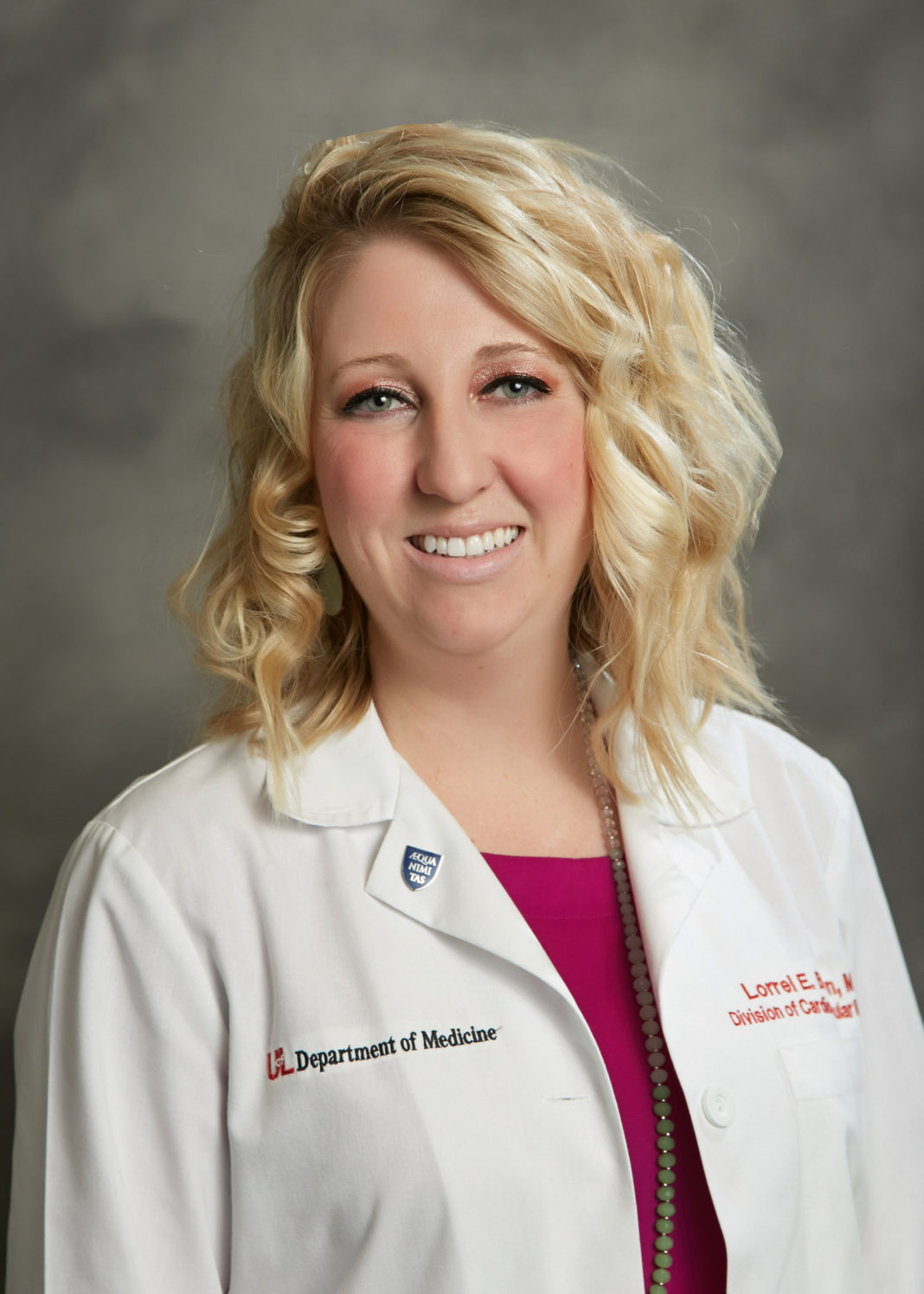
While CPR instruction in high school is required by law in a growing number of states, there is no standard method of implementation, according to a study by a University of Louisville doctor published this week in the Journal of the American College of Cardiology.
The study by Lorrel Brown, M.D., an assistant professor at the UofL School of Medicine and physician director for resuscitation at UofL Hospital, is titled “CPR instruction in U.S. high schools: What is the state in the nation?”
In the U.S., 350,000 people suffer cardiac arrest outside a hospital each year. Only 30 percent get bystander CPR, which affects survival, Brown said. Only 11 percent of those 350,000 survive.
“If we improve survival by just 1 percent, that’s 3,500 more people who will live,” Brown said.
The American Heart Association wants to double the percentage of cardiac arrest victims who receive bystander CPR by 2020, and CPR training in high schools has been endorsed by a variety of organizations. Thirty-nine states have passed laws requiring the training before graduation, including Kentucky, which passed a law last year. Similar laws in the remaining 11 states are being considered.
For the study, Brown examined the state laws and characterized them based on stringency of training.
“We know high school students can learn CPR. However, we have found CPR skill retention in high schoolers is poor, with only 30 percent performing adequate CPR six months after training,” she said. “We wanted to know, is there a better way to do it? How can we make the best use of this opportunity?”
The study had two parts: 1) what the law in each state requires and 2) how the laws are being implemented in schools.
To find out, Brown sent a survey to schools in the 39 states. She asked how CPR was being taught, who was doing the teaching and at what grade level.
“We found a wide degree of variability from state to state, and even school to school,” she said. “While the laws all have some similar features, such as teaching the hands-only method, they still leave a lot to the individual schools to decide.”
Most laws don’t recommend a specific program. Some require the training take place in a specific grade, while others don’t. Most training was being taught as part of a physical education class, but it varied widely who taught it, from a firefighter, a nurse, to the American Red Cross. Most laws don’t require the instructor to be certified to teach, an important distinction, Brown said, since not everyone who is certified in CPR will necessarily be a good instructor.
She said a major barrier for schools is the cost of CPR training. Certified instructors are not always readily available, and most states don’t provide funding for CPR training, leaving it to individual schools and districts. And high-quality mannequins, which are important for a more realistic experience and muscle memory, are expensive, Brown said. Thirty-six percent of schools surveyed were using a low-quality, inexpensive inflatable one.
She said the study “hopefully will help standardize the process to provide high-quality training.” Brown was assisted in the study by two UofL medical students, third-year Carlos Lynes, and fourth-year Travis Carroll, with Henry Halperin, M.D., of Johns Hopkins University School of Medicine, advising on the study.
She said it’s too early to tell whether the training in U.S. high schools has been effective in saving lives, but in some places such as Denmark, similar laws lead to increased rates of bystander CPR and survival.
“We’re still about 10 years out in the U.S.,” she said. With about 4 million students per year now graduating with CPR training, “by then we’ll have an army of people trained in CPR.”
Expanding CPR training has been especially important to Brown, who has worked for several years on unique approaches such as halftime demonstrations at UofL men’s basketball games. She founded and directs a program called “Alive in 5” (alivein5.org), a five-minute method of teaching CPR she developed that could become a standard for training. She studied the method at the Kentucky State Fair and found adults could learn high-quality CPR in just 5 minutes.
“We are still investigating the best method that is effective and efficient,” she said.



























